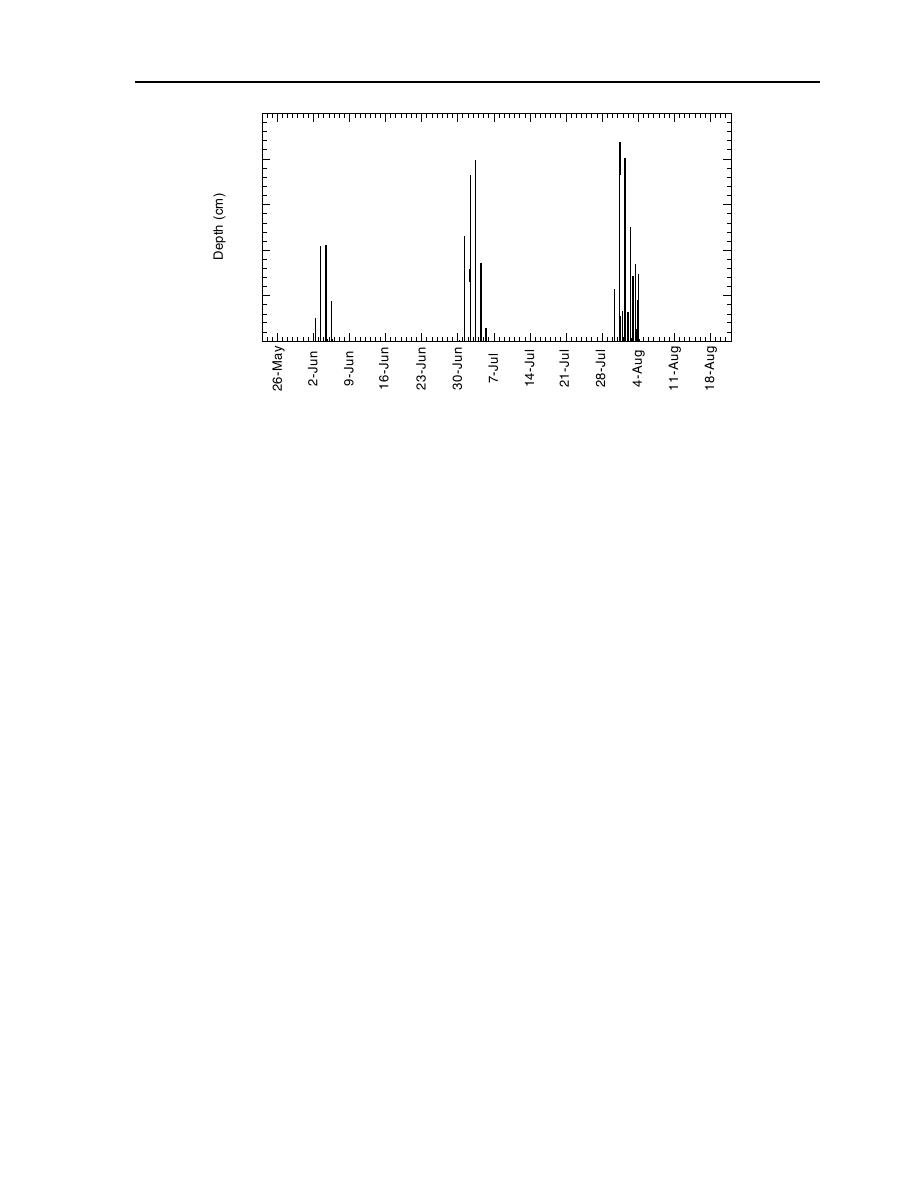
III-2. TREATMENT VERIFICATION
53
50
40
30
20
10
0.0
Figure III-2-12. Flood events recorded on the north side of the Bread Truck Pond.
toring station recorded only four floods. Mois-
year 32%. The loss from particles planted for
ture sensors (Fig. III-2-9) at the BT North 100
two seasons was 99%.
m monitoring station indicate that the north
side of the pond dried significantly between
and the exposure of new white phosphorus
each series of flooding tides. White phospho-
by surface erosion, the continued advance-
rus is detectable (0.0001 g/g) below the
ment of the Bread Truck drainage ditch should
method detection limit in the BT North 100
be arrested by installation of a tide gate. A tide
m composite samples. Residual white phos-
gate would result in better drying of the south
phorus from the five particles we planted
side of the pond and help future remediation
ranged from 0.08 to 2.9 mg. The total mass
actions in Areas C/D and Northern C.
recovered from the five particles planted in
Pond 258 and 256 (Northern A)
May 2000 was 5.74 mg. Given a total initial
mass of 27.8 mg, the removal was 79% (Table
Moisture conditions in Pond 258 (Fig. III-
III-2-5). Little (0.118 mg) was left of the par-
2-5, III-2-9) were favorable for sublimation/
ticles planted in June 1999 and recovered in
oxidation, similar to last year. The hourly av-
August 2000. Removal was 99.6% for the two
erage sediment temperatures were always
seasons.
higher during daylight hours than in Area C
The south side of the Bread Truck Pond was
(perhaps because of the slightly higher mois-
wetter than the north side because of poorer
ture content). The maximum hourly tempera-
ture average was 27.13C on 23 June 2000 at
drainage to the ditch (Fig. III-2-9). Moisture
conditions were similar to last year. The white
1900 hours. The loss from planted white phos-
phosphorus concentration in the composite
phorus particles was 89%.
sample taken at the BT South 100 m grid was
Pond 256 dried less than Pond 258, but the
0.00025 g/g. In June 1997 the concentration
loss of white phosphorus from the planted
range of five replicate composite samples
particles was similar (92%).
from this grid was 0.0030.0079 g/g. The
Pond 730 (Area C/D) and Pond 75 (Coastal East)
1998 and 1999 grid composites were within
this range. This is the first year that a signifi-
Pond 730 again experienced frequent flood-
cant reduction in concentration is evident in
ing from the Bread Truck ditch that constantly
this grid composite. The loss of the white
rewetted the drying sediments (Fig. III-2-9).
phosphorus from the particles we planted this
Some drying did occur as the sediment con-



 Previous Page
Previous Page
